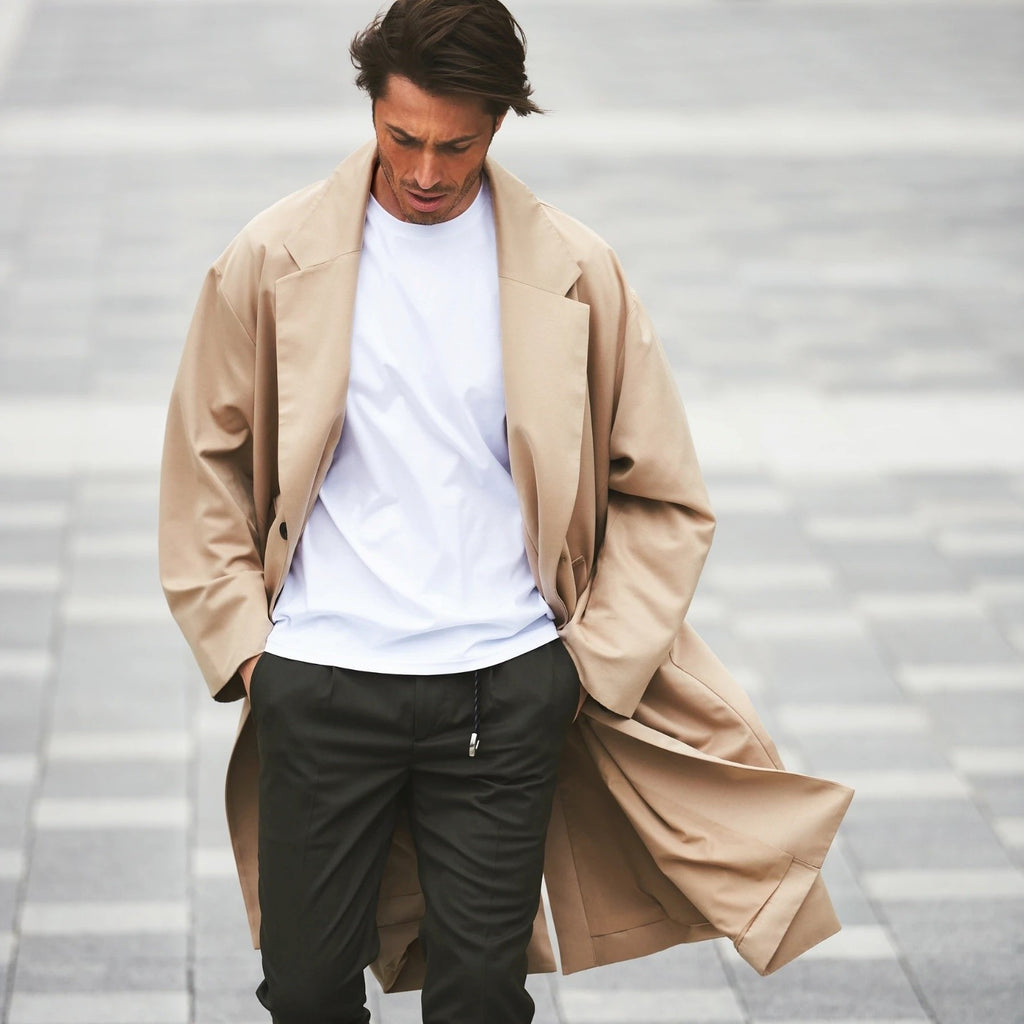What Temperature Should You Wear an Overcoat?
Posted by DANISH FAREED

Choosing the right clothing for varying temperatures is crucial to ensure comfort and well-being, especially when it comes to outerwear like overcoats. Overcoats serve not only as a fashion statement but also as a functional barrier against the elements.
In this guide, we will explore the ideal temperatures for wearing an overcoat, taking into account both style and practicality.
Overcoats: Style and Function
- Style Considerations
Overcoats come in various styles, ranging from classic trench coats to long, woolen options. The choice of style often depends on personal preference and the occasion. While trench coats may be suitable for milder weather and a professional setting, longer and heavier wool coats are more appropriate for colder temperatures.
- Functional Aspect
Apart from style, overcoats also serve a functional purpose by providing insulation against the cold. The key is to strike a balance between style and functionality, ensuring that the chosen overcoat not only complements your outfit but also shields you from the weather.
Temperature Guidelines
- Mild Temperatures (50-60°F or 10-15°C)
In moderately cool weather, a lightweight overcoat or a trench coat can be your go-to choice. These coats offer a stylish layer without causing overheating. Opt for breathable materials such as cotton or a blend of cotton and polyester. This is also the perfect temperature range for experimenting with different styles and colors.
- Cool Temperatures (40-50°F or 4-10°C)
As the temperature drops, it's time to transition to a heavier overcoat. A mid-length wool coat or a stylish pea coat becomes a practical choice. Look for overcoats with lining for added warmth. Consider neutral tones like navy, charcoal, or camel, as they not only exude sophistication but also pair well with a variety of outfits.
- Cold Temperatures (30-40°F or -1-4°C)
In colder weather, prioritize warmth without sacrificing style. A full-length wool coat or a well-insulated parka becomes essential. Ensure that the overcoat is thick enough to provide insulation against the chill. Darker colors like black or deep gray are not only practical but also versatile, making them suitable for both formal and casual occasions.
- Freezing Temperatures (Below 30°F or Below -1°C)
Extreme cold demands a heavy-duty overcoat designed for harsh conditions. Consider a down-filled coat or a high-quality, insulated parka. The length should be sufficient to cover your torso and thighs, providing maximum protection. Fur-lined hoods and collars add an extra layer of warmth and style. Dark and neutral colors are practical, but don't hesitate to incorporate bold accessories to add a touch of personality.
Additional Tips
- Layering for Versatility
Regardless of the temperature, layering can enhance the functionality of your overcoat. Pair it with sweaters or thermal wear in extremely cold conditions for added insulation. In milder weather, a simple shirt or light sweater underneath may suffice.
- Accessorize Wisely
Accessorizing with scarves, gloves, and hats not only adds flair to your ensemble but also contributes to staying warm. Choose accessories that complement your overcoat in terms of both color and functionality.
Conclusion
Selecting the right overcoat for the prevailing temperature is a thoughtful process that involves considering both style and practicality. By adhering to these temperature guidelines and additional tips, you can confidently navigate various weather conditions while looking and feeling your best.
Remember, the key is to strike a balance between staying warm and expressing your personal style.






















